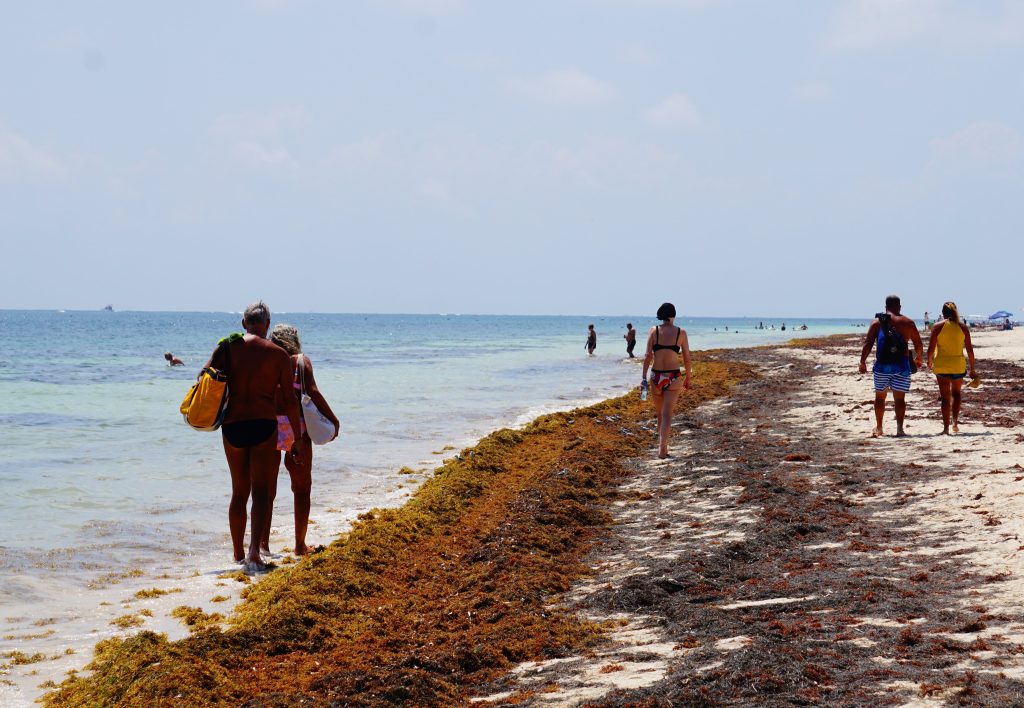When is the seaweed going to hit Florida?

Seaweed blooms are a natural occurrence in marine ecosystems, but when they grow excessively, they can become a significant problem for coastal regions. In recent years, the Florida coastline has experienced an increase in seaweed washing ashore, particularly Sargassum, a type of floating seaweed common in the Atlantic Ocean and Gulf of Mexico. Here’s an overview of the situation and an outlook on when seaweed may hit Florida’s shores:
Understanding Sargassum Blooms
Sargassum is a brown algae that forms floating mats on the ocean’s surface. It is essential for marine life, providing habitat and food for various species. However, when it grows excessively, the mats can break apart and wash ashore, creating a host of problems:
Environmental Impact: Excessive seaweed on beaches can suffocate marine life and disrupt coastal ecosystems.
Tourism Impact:
Large amounts of seaweed can detract from the natural beauty of Florida’s beaches, affecting tourism and local businesses.
Health Concerns: Decomposing seaweed can release hydrogen sulfide, a gas with a strong odor, potentially affecting air quality.
Factors Contributing to Seaweed Blooms
Several factors influence the growth and movement of Sargassum:
Ocean Currents:
Currents in the Atlantic Ocean and Gulf of Mexico play a significant role in the distribution and movement of seaweed mats.
Nutrient Levels: Increased nutrients in the water, often due to agricultural runoff and pollution, can promote excessive seaweed growth.
Weather Patterns: Winds and storms can impact the movement and deposition of seaweed along the coast.
Predicting Seaweed Arrivals
Predicting when seaweed will hit Florida’s coast can be challenging due to the complex interplay of oceanographic and meteorological factors. However, scientists use satellite imagery and ocean current models to monitor and forecast the movement of seaweed. These forecasts help coastal communities prepare for potential influxes of seaweed.
Recent Trends and Outlook
In recent years, Florida has seen an uptick in Sargassum blooms during the spring and summer months. As temperatures rise and ocean currents shift, seaweed can become more prevalent along the coast. Given current trends, it is likely that seaweed will continue to wash ashore during these seasons.
Preparing for Seaweed Arrivals
Coastal communities in Florida are taking proactive measures to manage seaweed influxes:
Beach Cleanup: Regular beach cleaning operations help clear the shore of seaweed.
Monitoring: Continuous monitoring of seaweed movement allows for better preparation and response.
Research: Ongoing research aims to better understand Sargassum blooms and find sustainable solutions.
While it is challenging to predict with certainty when seaweed will hit Florida’s coast, it is clear that excessive seaweed blooms are a recurring issue, especially during the warmer months. Ongoing monitoring and proactive measures can help mitigate the impact of seaweed on Florida’s coastal regions. As research continues, we may gain more insights into how to manage and prevent excessive seaweed blooms in the future.